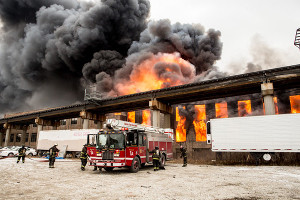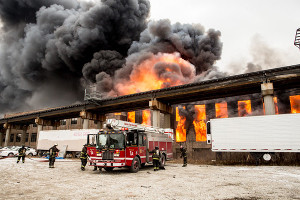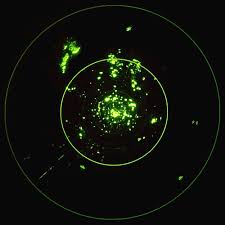It is decision time! Our artificial intelligence system has gone half way through the OODA loop. Whether it is a living system, or a computer based system, it has observed the environment, it has evaluated the situation and oriented itself in the decision space. And now it is time to settle on a plan, a decision.

The decision process is one of comparing the world as it is to the world as we want it to be and selecting actions or behaviors that will bring the system closer to the desired state.
Maybe you are one of the people who look at every aspect of a situation before you make up your mind. You like lists and spreadsheets. You lay out plans with contingencies – if I do this, then this might happen, so then I’ll do this, and… This is one way that people make decisions. But there is another. You are the people who look at the situation and let your sub-conscious take over. No detailed lists for you. You just get a handle on the whole situation and the right course of action springs full-born from your brow.
These are the two main approaches to decision making used by researchers in artificial intelligence. One is a symbolic,deliberative approach, the other is a non-symbolic, pattern based approach.
 Let’s use playing chess as an example. Chess had been for decades the defining test for artificial intelligence. The idea was that chess is hard, chess takes complex analysis, only really intelligent people play chess well. When a computer can defeat a chess grand master – that will demonstrate artificial intelligence. Of course, you can now buy a computer chess program that will give the best chess players a run for their money, for under a hundred dollars.
Let’s use playing chess as an example. Chess had been for decades the defining test for artificial intelligence. The idea was that chess is hard, chess takes complex analysis, only really intelligent people play chess well. When a computer can defeat a chess grand master – that will demonstrate artificial intelligence. Of course, you can now buy a computer chess program that will give the best chess players a run for their money, for under a hundred dollars.
Deliberative Approach
The deliberative approach to decision making is based on a model of looking at every possible outcome, one step at time, and eliminating the ones that don’t work well. This is the “If I do this, then you’ll do that , then I can do…” approach. It requires that the goals and the current situation be represented in some symbolic manner, and that the system explore all the possible outcomes of all the possible actions. The big drawback is that in even a simple situation there may be millions or billions of possible action sequences. So it requires both large computers, and lots of time to explore the possible outcomes. This has worked in chess – Deep Blue by IBM played against Garry Kasparov and won a six game match in 1997. But Deep blue was an immense super computer with dedicated hardware designed to play chess, and only chess.
Can you imagine trying to do this in order to successfully drive a car in rush hour traffic? You can decide what route to take with this approach (There’s construction on Broadway, so I’ll cut over to …) but not for how to avoid the guy veering into your lane. For that you need a different approach to AI.
Patterns and reactions
We talked about an alternate decision making process that some people use – the non-verbal sub-conscious approach. There is an equivalent for artificial intelligence systems – pattern based and reactive decision making. These are the neural nets, and fuzzy logic systems. Rather than working through possibilities step by step, the look for patterns in the situation, and then apply the solution that has worked in the past in similar situations.
This is similar to what a driver does when they see brake lights in the traffic ahead. They don’t need to analyse every possible interaction of the cars are the road; they see a pattern (brake lights) and the reuse the solution (I should slow down). This give the driver the ability to react to the rapidly changing traffic conditions and achieve their goal (arrive safely at home)
The same thing is true with many chess players (both computer and human) – they build up libraries of how to open a game or how to finish the end game. And for many chess grand masters, this is true in the middle of the game as well. Often, when asked about “How many moves do you look ahead?” they say “None, I just get a sense of the right move, and decide to take that move.
This is from an interview with top chess player Magnus Carlsen from Time Magazine:
Your coach, former world champion Garry Kasparov, says your strength is not calculation, but rather your ability to intuit the right moves, even if their ultimate purpose is not clear. Is that right?
I’m good at sensing the nature of the position and where I should put my pieces. You have to choose the move that feels right sometimes; that’s what intuition is. It’s very hard to explain.
So, in the end, this step of the OODA loop really does come down to simply deciding what to do next.
Next up: Caught in the Act!









